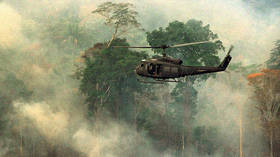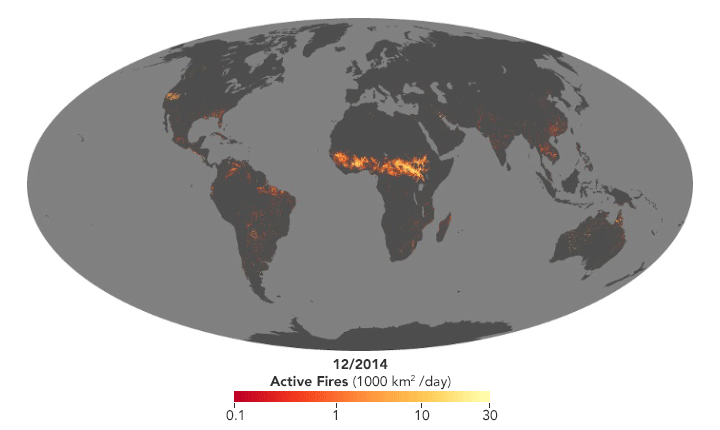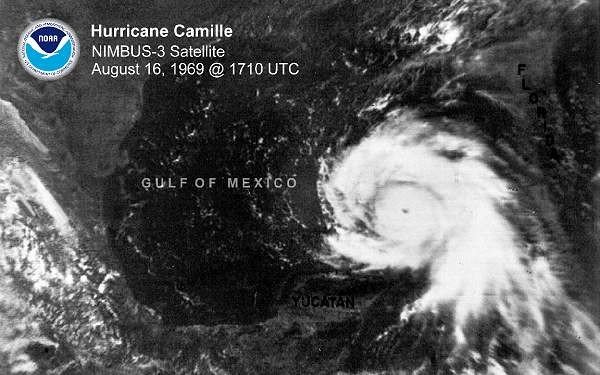Amazon is on fire, but are we DOOMED? What’s behind the climate catastrophe headlines

The Amazon is burning, the planet is heating, and it seems like the four horsemen of the climate change apocalypse are knocking at our door. But just how right are the prophets of ecological doom?
The Amazon rainforest is ablaze. Wildfires have increased by 83 percent this year on last, with nearly 80,000 individual fires spotted by Brazil’s National Institute for Space Research. Fires in this region are typically started by farmers every year to clear overgrown land for grazing and replanting, but the extent of this year’s inferno has captured the attention of the global media like never before.
“Our home is burning,”tweeted French President Emmanuel Macron, promising to make the “emergency” top of the agenda at last month’s G7 summit. Macron was joined by US lawmakers, presidential candidates, climate activists, and much of the world’s news outlets, who blamed the pro-industrial policies of Brazilian President Jair Bolsonaro for accelerating the forest’s demise.
Also on rt.com Macron doesn't care about Amazon fires, what we are seeing is a G7 info war to sink BolsonaroAnd it’s not just Brazil that’s burning. With swathes of Africa, the Arctic, and Asia on fire, the New York Times declared a “nightmare scenario” for the world’s forests; one that could drastically reduce the planet’s “lung capacity.”
But is that all true? The forests are indeed burning, and the fires riddling the Amazon are the worst seen there since 2010. But globally, wildfires have decreased drastically in the last two decades. That information doesn’t come from a climate-skeptic blog or the editorial board of the Wall Street Journal, it’s from NASA, which has been studying wildfires with satellites since the 1980s.
According to the space agency, the area scorched every year by wildfires has dropped 24 percent since 2003. While land is still being deforested, it is now being more commonly done with machines, not fire, NASA researchers said. Indeed, “the changes in savanna, grassland, and tropical forest fire patterns are so large that they have so far offset some of the increased risk of fire caused by global warming,” NASA scientist Doug Morton said.

Climate change makes wildfires more likely to start, Morton continued, but “human activity has effectively counterbalanced that climate risk.” NASA’s researchers also rubbished claims that wildfires contribute to a global increase in carbon emissions.
“Despite the vast quantities of carbon released by fires in savannas, grasslands, and boreal forests, research shows that fires in these biomes do not generally add carbon to the atmosphere in the long term,” stated the NASA Earth Observatory. Instead, the regrowth of vegetation and creation of charcoal typically recaptures the lost carbon within “months or years.”
Even those dismayed at the loss of our planet’s forest for aesthetic reasons are needlessly worrying. A University of Maryland/NASA study last year discovered that forest growth over the last 35 years has more than offset losses through deforestation. Humans are given a bad rap for slashing and burning the world’s forests, but thanks to human-led replanting efforts, forest cover worldwide has increased by an area the size of Texas and Alaska combined.
A planet in crisis?
This is not the only horseman of the eco-apocalypse we’re warned about. Drought is portrayed as a problem that will only get worse over time, creeping from the deserts into the western world. The headlines blare out that we’ve been parching our planet for more than 100 years, but modern record-keeping only began at the turn of the 20th century. Since then, the earth has fluctuated between wet and dry periods, with the three major droughts in the last three decades in the US paling in comparison to the ‘Dust Bowl’ conditions of the 1930s.

Hurricane Dorian, the Category 5 monster winding its way across the Bahamas to Florida this week, is portrayed as the deadly spawn of climate change, and a warning for us all. However, despite the recent increase in frequency of such storms, a hurricane equally as furious struck Florida in 1935, killing 423 people. Altogether, 35 Category 5 storms rivalling Dorian have formed in the Atlantic since 1924.
Flooding is another terror entirely. While climate change has been identified as a driver of catastrophic floods worldwide, there are myriad other factors that play into the phenomenon, and limited data on the floods of the past – unless you count the Bible as evidence – make a comparison tricky.
None of this is to suggest that our planet is not in trouble. Indeed, while deaths from all forms of natural disasters are down since the turn of the 20th century – sometimes by a factor of hundreds – the frequency of the disasters themselves is up.
Do we need a Green New Deal?
However, the way headlines put it, you’d swear we’re a scourge on the planet who need to be civilized by a benevolent green dictatorship. Take the Green New Deal: a radical piece of legislation sponsored by 104 members of Congress in the US that among other things, calls for a complete abolition of air and automobile travel, as well as government-overseen wealth redistribution programs beyond anything the communists of the 20th century could dream of.
Surprise!✨I am thrilled to announce the launch of our #GreenNewDeal art series with custom Bronx & Queens GND posters.The Bronx edition poster will be given for free as a limited release to the public at our Pelham Bay Nature Day & Backpack Giveaway in the Bronx tomorrow./1 pic.twitter.com/xD4AinKrWi
— Alexandria Ocasio-Cortez (@AOC) August 30, 2019
According to Alexandria Ocasio-Cortez and Bernie Sanders, two of the GND’s loudest proponents on Capitol Hill, we have 12 years to declare a “climate emergency” and surrender modernity itself to a government that can better manage the crisis than we can. Both lawmakers have presented the Amazonian fires as yet more evidence in favor of the green power grab, with the help of a largely complicit media.
However, as the NASA data shows, there are always shades of gray behind black and white, alarmist headlines. Doomsayers get clicks, and clicks keep the media alive. But doomsayers alone should not influence actual government policy.
This does not mean our planet is totally fine, nor does it mean we can’t make improvements. Instead, it should serve as a reminder to double check anything that activists, government, and the media treat as gospel.
By Graham Dockery, RT
Subscribe to RT newsletter to get stories the mainstream media won’t tell you.














